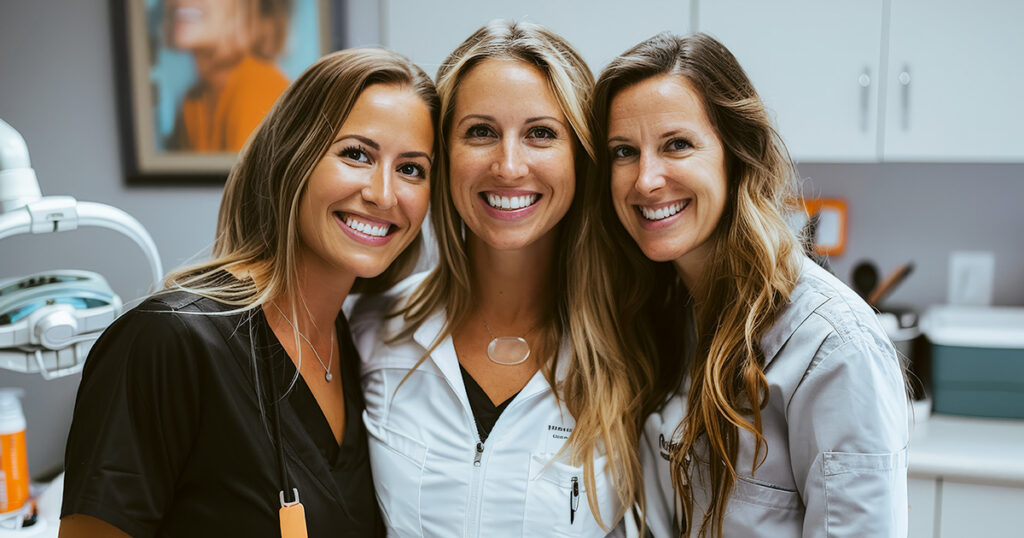Opportunities to get the most out of your business
This article was written by Tim Greaves, partner at Cain Watters and Associates. It was originally published in Dentaltown Magazine.
The road to financial freedom is paved with good intentions, especially for dentists. Inherently driven, not to mention intelligent, it’s no surprise dentists are successful both clinically and professionally. Those who go a step forward and choose a path of ownership typically share the same spirit for growing their dental practice into reaching their personal financial goals.
Although I’m not a dentist myself, I know how difficult it can be to juggle both patients and a business. For over 20 years, I’ve been able to guide many of Cain Watters & Associates’ 2,600 dental clients along their journey to reach their long-and-short term financial goals. From overcoming dental school debt, buying a second or third location to transitioning into retirement—I’ve gotten a front row seat into the life cycle of a dental practice owner.
Clinically trained for an extra four to six years in post-graduate studies, dentists come out of dental school confidently prepared to hit the ground running seeing patients. What could be lacking for these young and hungry professionals? Business acumen and training on how to successfully run a multi-million-dollar practice.
In order for any dentist to be effective in meeting their personal financial goals, they need to be successful in their business. Which is usually not a problem for most practices, but then 2020 happened.
Dealing with last year’s hurdles and unknowns is the perfect example of how a business owner can take their mind off long-term goals, because they are distracted by today’s current demands.
For example, many doctors returned from shutdown to busier-than-ever practices, government stimulus opportunities and new state safety mandates. At times like that, it’s easy to take your eyes off things you were doing before like staff management, accurate accounting and retirement planning.
Practices could always be running more efficiently, just like there is always room for improvement in a personal financial plan. Based on these observations and more, I’ve selected the top four mistakes I see my doctors making. They are a hybrid of personal and practice—as the health of the personal plan relies heavily on the health of the business.
1. Assess Fees Annually
No one likes to raise fees, and many owners feel that higher prices could become a barrier to entry. Fees should be assessed annually, and sometimes increases must be made, especially with 2020’s cost increases on things like PPE.
Additionally, ask yourself these questions:
Are you charging enough compared to other practices in your area? With my clients, I consult various fee publications which allows the practice to see where their fees fall compared to practices in the same area. Gradual increases are almost unnoticeable to patients, yet can make a big difference on your profit. For example, a 3% fee increase for a $1 million general dentistry practice would equate to a $30,000 increase in net profit.
Following practice closures, are you behind on your hygiene patients and missing out on diagnosing more profitable treatments, like periodontics? Due to COVID closures, many practices returned to already full hygiene schedules, reducing the capacity for hygiene to perform periodontal treatments.
It may be due to less time, or hygiene performing for free because all the blocks are full, either way, it’s reducing the level of profit from hygiene. Some practices may want to consider bringing on a temp position or even expanding hours to Friday mornings just to catch up. The perio isn’t going away, it just isn’t getting treated like it was pre-pandemic.
There’s one more aspect to consider when looking at the grand scheme of fee increases: how much you are writing off each year? Dentists are typically very involved in their community through schools, church and charities. They know a lot of people, which can sometimes lead to doctors discounting fees at a high level.
Adjustments can be within 8-10% on average, but when you pass 10%, you need to question if you are writing off too much in discounts. Consider writing out a plan of discounts in advance, quantify the number of free cases and set a standard discount percentage for your selected group, rather than make it a free for all.
2. Manage Staff Salaries
Dentists traditionally have great relationships with their staff resulting in low turnover. Although this is good, when long term staff have been given 3-5% raises annually, this can lead to staff wages above national and regional averages. Our new Dental Practice Comparison Report features average salaries by specialty and size, available to download for free so you can see how you compare.
Staff salaries can be a practices’ largest overhead expense and need to be around only 20-24% of collections to remain healthy. If you find yourself over this percentage, it’s time to regain balance.
Similar to fees, being off by only a small amount on salaries can really add up. For example, a 1% overage on staff salaries for a $1 million general dentistry practice would equate to $10,000 each year, while a 4% overage would be $40,000. This could be the difference between the ability to fund your share of the profit-sharing plan, or not.
Look to see what other practices in your geographic region are paying and see how you measure up. Hourly rates can also vary significantly based on if you are in a rural, suburban or urban area. It is important to give raises to underpaid individuals, but for those that are within the average range—keep them there by only giving cost of living increases on an annual basis.
Production-based bonuses are a great way to reward based on performance. This way you can offer incentives based on growth and profitability, rather than a blanket hourly increase.
If you have staff members that are overpaid, unwinding this is one of the hardest things to do. No staff member will volunteer to take a cut and turnover may be needed to regain control.
3. Leverage Tax Efficiencies
As successful small business owners, most dentists are high-income earners which positions them in highest tax brackets. We have a graduated tax system, meaning that one’s tax rate increases as the taxable income goes up.
With the current proposal from the Biden Administration on increasing the tax rate 5% higher for the top tax bracket, in certain states many dentists could end up paying 50-55% in federal, state and payroll taxes. We have broke down the entire tax policy proposal in our blog. With these proposed changes, and changes to capital gains tax rates, leveraging tax deferred plans like a 401(k) and cash balance plans will be essential.
To think that you may be taking home less than half of your earned income is frustrating. Thankfully there are strategic ways to reallocate money. I am a huge proponent of tax deferred retirement plans such as 401(k) plans, defined benefit and cash balance plans. These types of plans become advantageous when the tax rates are soaring above 50%.
When you contribute your money to these types of savings vehicles you immediately get a return of 50% by not having to pay the taxes on each dollar. You will have to contribute some money to the practice staff, but chances are it will be significantly less than the 50% tax benefit you are receiving. These types of plans can offer owning dentists $50,000 to $200,000 in additional tax deferred savings.
Cash balance plans can be a great tax strategy for doctors looking to sell their practices. If you structure the plan the right way, this plan can be set up a few years before you retire, giving you the ability to put money aside, protecting the funds for when you need it. This can be especially helpful should the tax rate change.
Although most are already incorporating some of the larger tax benefits of ownership, they may be missing out on some of the smaller strategies that can really add up to significant savings.
Dentists may only attribute business travel expenses for continued education events, or when the expense has the potential for other travel as well, like an annual corporate meeting or event.
Also consider writing off some auto expenses. Although you cannot write off your daily commute to the office, consider other milage like a visit to a referring doctor, study club meeting or the drive to the bank or to pick up supplies. If there is a business reason, you should be running travel and auto through the business.
Meals is another area that has potential for savings. For 2021 and 2022, business meals are now 100% fully deductible, instead of only being 50% deductible. Entertainment expenses, like a sporting event or tickets to a show, are still non-deductible. Make sure you keep all itemized receipts for any business meals.
If you have children, consider employing and paying them out of the practice. During the pandemic, I had clients whose children were working in the office and helping take patient temperatures or shuttling patients out of cars. Children can also help around the office by marketing within their sports or school club or even modeling. Children can earn up to $12,000 before they are required to pay federal income taxes.
The bottom line is that there are more deductions out there than just your cell phone and internet. Moving expenses from your personal accounts to the business, when justified, can add up and save you a lot in taxes. Working with a CPA familiar with both the dental and small business tax landscape can make a big difference.
4. Take Advantage of Retirement Savings Opportunities
Leveraging your business as a vehicle for retirement savings is an extension of being tax efficient. As high-income earners, dental practice owners have the ability to deduct $57,000 for the doctor into a 401(k) plan, $63,500 if over 50. If the spouse is working in the practice, there is the potential for another $19,500, or $26,000 if over 50. With the ability to get $76,500 to $89,500 annually into a 401(k), at a 37% tax rate, that saves the doctor a significant $28,000 to $33,000 each year.
There is a common misconception that it would cost too much to run your own 401(k), cash balance or defined benefit plan. I disagree and suggest searching out a different pension company if you are in this situation.
Not all 401(k) plans are created equal. Ask for a proposal from a pension administrator based on your employee census. There are many factors that determine how much money you have to give the staff. I council my clients on how important it is to test the proposed plans. One of the hard parts about retirement plans is that very few people understand what fees they are paying to the TPA, attorney, recordkeeper, investment advisor, etc.
Additionally, I will get a question on if extra money should be used to pay off long-term debt like business loans or home mortgages. With interest rates at historical lows, instead of paying extra on debt, it’s best to take extra money and save it. If interest rates are 3% and rate-of-return on an investment is 7%, you will make more money by saving.
Business ownership, management and personal finance isn’t easy, especially after a year like 2020. But if you spend more time planning your vacation than your financial plan, it’s likely time for a change.
There were many unknowns thrown at dentists, making it easy to take their eyes off the fundamentals of their financial plan. The good news is, it’s not too late. I tell my clients that no matter how old you are, if you are still practicing, you can make a difference.
You don’t have to go at it alone. Contact a member of our team, our advisors can help you reclaim efficiencies and create new strategies to make this year the best yet.














